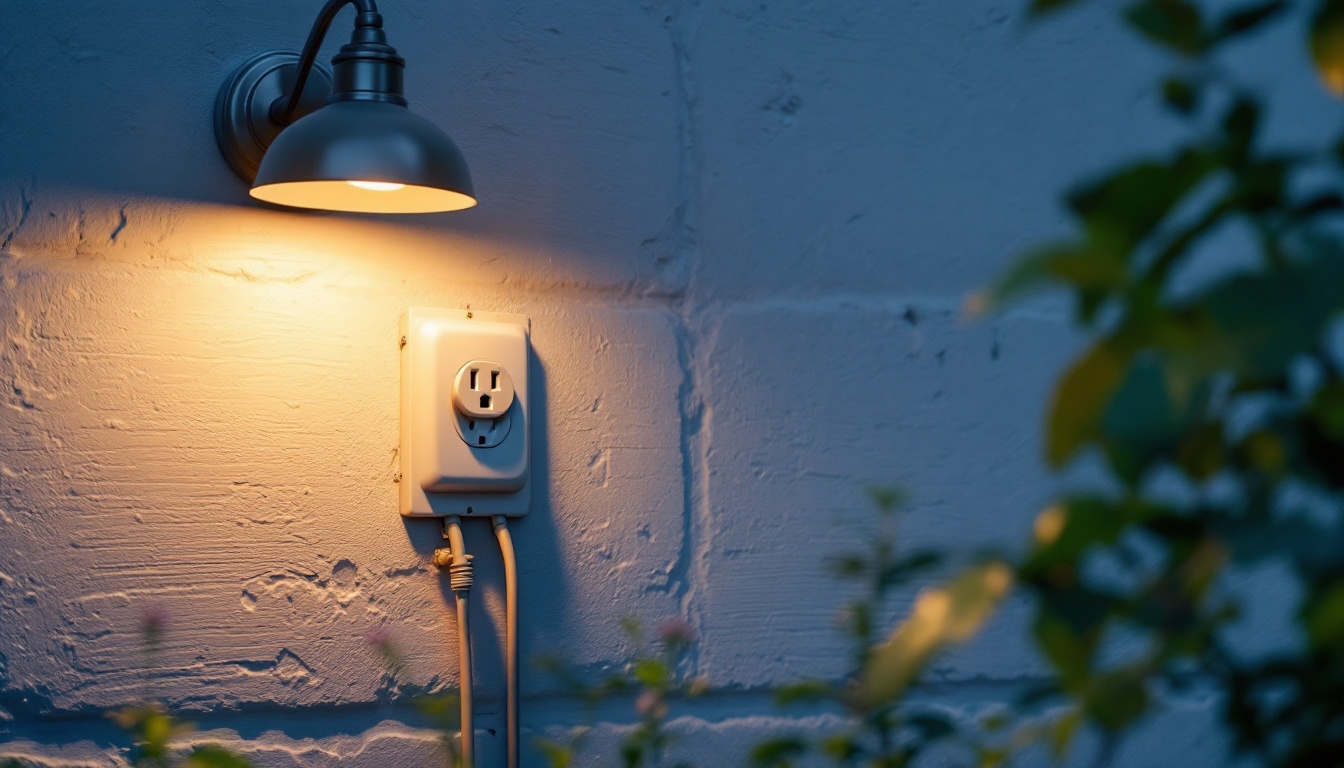

As the lighting industry evolves, the transition to LED technology has become essential for contractors aiming to provide efficient and sustainable solutions. LED bulbs are not only energy-efficient but also offer longevity and versatility that traditional incandescent bulbs cannot match. This article delves into proven methods that lighting contractors can adopt to maximize the benefits of LED bulbs for lamps.
Before diving into practical applications, it is crucial for lighting contractors to grasp the fundamental principles of LED technology. Light Emitting Diodes (LEDs) work by passing an electric current through a semiconductor, which then emits light. This process is vastly different from traditional lighting methods, where heat is generated to produce light. The semiconductor material used in LEDs can vary, influencing the color and intensity of the emitted light. This versatility allows for a wide range of applications, from warm, ambient lighting in homes to bright, focused lighting in commercial spaces.
One of the most significant advantages of LED bulbs is their energy efficiency. LEDs consume up to 80% less energy than incandescent bulbs, which translates to lower electricity bills for clients. This efficiency is particularly beneficial in commercial settings where lighting is used extensively. By educating clients on the potential savings, contractors can position themselves as knowledgeable experts in energy conservation. Furthermore, the reduced energy consumption of LEDs contributes to a lower carbon footprint, making them an environmentally friendly choice. As sustainability becomes increasingly important to consumers, highlighting the eco-friendly aspects of LED technology can further enhance a contractor’s appeal to potential clients.
LED bulbs have a much longer lifespan compared to traditional bulbs, often lasting up to 25,000 hours or more. This longevity reduces the frequency of replacements, which not only saves money but also minimizes maintenance efforts. Lighting contractors should highlight these benefits to clients, emphasizing the reduced labor costs associated with less frequent bulb changes. Additionally, the durability of LEDs means they are less likely to break or fail, providing a reliable lighting solution that can withstand various environmental conditions. This resilience makes them particularly suitable for outdoor applications, where exposure to the elements can significantly shorten the lifespan of traditional lighting options. By showcasing the robust nature of LEDs, contractors can reassure clients about their investment in long-lasting lighting solutions.
Choosing the appropriate LED bulbs for various applications is critical for achieving optimal lighting results. Contractors must consider factors such as color temperature, brightness, and compatibility with existing fixtures.
Color temperature is measured in Kelvin (K) and affects the ambiance of a space. Warmer tones (2700K-3000K) create a cozy atmosphere, suitable for residential settings, while cooler tones (4000K-5000K) are ideal for commercial spaces requiring bright, clear lighting. Contractors should guide clients in selecting the right color temperature based on the intended use of the space. For instance, in a home office, a cooler light can enhance focus and productivity, while a warm light in a living room promotes relaxation and comfort. Additionally, understanding the psychological effects of color temperature can help contractors provide tailored recommendations that align with the client’s lifestyle and preferences.
Brightness is quantified in lumens, and understanding this measurement is vital for contractors. Unlike watts, which measure energy consumption, lumens directly indicate the amount of light emitted. Clients often have misconceptions about brightness, so contractors should explain that a higher lumen count means a brighter light, regardless of wattage. This knowledge empowers contractors to recommend the right bulbs for specific applications. For example, a standard 60-watt incandescent bulb typically emits around 800 lumens, which can be easily replaced with an LED bulb that uses only about 10-12 watts to produce the same brightness. Educating clients on this can lead to significant energy savings and longer-lasting lighting solutions, contributing to both environmental sustainability and cost-effectiveness.
When retrofitting existing fixtures with LED bulbs, compatibility is a key consideration. Not all LED bulbs fit seamlessly into traditional fixtures, and some may require additional components like dimmers or transformers. Contractors should assess the compatibility of LED options with existing systems to avoid issues during installation. Furthermore, it is essential to consider the type of fixture, as some may not be designed to handle the lower wattage of LED bulbs, potentially leading to flickering or reduced lifespan. Additionally, contractors should be aware of the various base types (such as E26, GU10, or MR16) and ensure that the selected LED bulbs match the socket specifications. By conducting a thorough compatibility check, contractors can help clients avoid future headaches and ensure a smooth transition to energy-efficient lighting solutions.
Proper installation of LED bulbs is crucial for ensuring their optimal performance and longevity. Lighting contractors should adhere to best practices to maximize the benefits of these advanced lighting solutions. By following these guidelines, contractors can help clients enjoy the energy efficiency and enhanced brightness that LED technology offers, while also minimizing the risk of issues that could arise from improper installation.
Choosing the right fixtures for LED bulbs is essential. Not all fixtures are designed to accommodate the unique characteristics of LEDs. Contractors should recommend fixtures that are specifically rated for LED use, as this ensures proper heat dissipation and enhances the lifespan of the bulbs. Additionally, selecting fixtures with appropriate reflectors and lenses can further optimize light distribution, creating a more aesthetically pleasing environment. It’s also worth considering the compatibility of the fixture design with the intended ambiance, as different styles can dramatically alter the mood of a space.
When installing LED bulbs, attention must be paid to the wiring. LEDs operate at lower voltage levels, and improper wiring can lead to flickering or premature failure. Contractors should ensure that the wiring is compatible with the LED technology being used, and that any necessary modifications are made to accommodate the new lighting system. This may include upgrading to a compatible dimmer switch or ensuring that the existing circuit can handle the total wattage of the new LED setup. Furthermore, using high-quality wiring materials can prevent potential electrical issues and ensure a safer installation process.
After installation, testing the lighting system is crucial. Contractors should conduct thorough checks to ensure that all bulbs are functioning correctly and that the desired lighting effect is achieved. Quality assurance not only enhances client satisfaction but also reinforces the contractor’s reputation for excellence. This process may involve adjusting the positioning of the fixtures to eliminate shadows or hotspots and confirming that the color temperature of the light aligns with the client’s preferences. Additionally, providing clients with guidance on how to maintain their LED systems can further enhance their experience and prolong the life of the installation.
For lighting contractors, educating clients about the advantages of LED technology is essential for fostering trust and encouraging adoption. Many clients may be hesitant to switch from traditional lighting due to misconceptions or lack of information.
While the initial investment in LED bulbs may be higher than traditional options, the long-term savings are substantial. Contractors should provide clients with a cost analysis, illustrating how reduced energy consumption and lower maintenance costs contribute to overall savings. This financial perspective can be a compelling argument for transitioning to LED technology.
In an age where sustainability is paramount, the environmental benefits of LED bulbs cannot be overlooked. LEDs contain no toxic materials and are 100% recyclable, making them a greener choice compared to traditional bulbs. Contractors can position themselves as environmentally conscious professionals by highlighting these benefits to clients who prioritize sustainability.
Despite the numerous benefits of LED bulbs, contractors may encounter challenges during installation or client education. Understanding these challenges and having solutions at hand can enhance the contractor-client relationship.
Flickering is a common issue that can arise when retrofitting LED bulbs into existing fixtures. This problem often stems from incompatible dimmers or wiring. Contractors should advise clients on the importance of using LED-compatible dimmers and provide recommendations for reliable products. Additionally, educating clients on the differences between traditional and LED lighting can help set realistic expectations.
The Color Rendering Index (CRI) measures how accurately a light source displays colors compared to natural light. Some clients may express concerns about the CRI of LED bulbs. Contractors should explain that many LED options offer high CRI ratings, making them suitable for various applications, including art galleries and retail environments where color accuracy is crucial.
The LED lighting industry is continuously evolving, with new technologies and trends emerging regularly. Staying informed about these developments is essential for lighting contractors who wish to remain competitive.
Smart lighting systems are gaining popularity, allowing users to control their lighting through smartphones or voice-activated devices. Contractors should familiarize themselves with smart LED options and be prepared to offer clients integrated solutions that enhance convenience and energy efficiency. This trend not only appeals to tech-savvy clients but also positions contractors as forward-thinking professionals.
Human-centric lighting focuses on the impact of light on human well-being. This approach considers factors such as circadian rhythms and the psychological effects of different lighting conditions. Contractors should explore options that promote human-centric designs, as this trend is increasingly sought after in both residential and commercial spaces.
LED bulbs represent a significant advancement in lighting technology, offering numerous benefits for both contractors and clients. By understanding the fundamentals of LED technology, selecting the right products, adhering to best installation practices, and educating clients, lighting contractors can successfully navigate the transition to LED solutions. As the industry continues to evolve, staying informed about emerging trends will further enhance the contractor’s ability to provide innovative and sustainable lighting solutions.
Incorporating these proven methods into daily practices will not only improve client satisfaction but also solidify a contractor’s reputation as a leader in the lighting industry. Embracing LED technology is not just a trend; it is a commitment to quality, efficiency, and sustainability that will shape the future of lighting.
Ready to elevate your lighting projects with the efficiency, quality, and sustainability of LED technology? Look no further than LumenWholesale for all your lighting needs. We offer an extensive selection of top-quality, spec-grade LED products at unbeatable wholesale prices, designed to empower contractors like you. With LumenWholesale, you can forget about the middleman and enjoy superior lighting products at the best value. Plus, with free shipping on bulk orders, you can stock up on premium lighting solutions without worrying about hidden fees. Don’t compromise on quality or price. Discover the perfect blend of quality, affordability, and convenience at LumenWholesale today.

Discover essential insights into grow lights tailored for lighting contractors.

Discover the ins and outs of solar lighting tailored specifically for lighting contractors.

Discover essential information about exterior receptacle boxes tailored for lighting contractors.

Discover the essential reasons why commercial wholesale lighting is a game-changer for lighting contractors.
Get notified when NEW deals are released.
Optimize your budget with wholesale discounts.
Only top-quality, specification-grade lighting products.
No additional costs at checkout - what you see is what you pay.
We understand the unique needs of contractors.